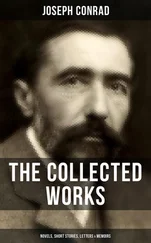After numerous delays Gibson, outfitted for the most arduous journey of his life, laden with flowering and medicinal plants, fruit trees and seeds for distribution to foreign gardens, joined the Jupiter at Woolwich and sailed in late September on rough seas for Madeira. He recognised that this was his chance for glory and he was full of gratitude to Paxton. He was clearly excited despite the pressure to return with a valuable cargo of Orchideae . His only concern was with the famed air-tight cases stored on the poop deck, in which the outgoing plants were already looking rather sick.
Gibson’s journey to Calcutta was to take six and a half months. During a week in Madeira he found no new plants but, abroad for the first time in his life, he was caught up in admiration and wonder at the spontaneous growth of oranges and lemons, grapes and bananas and the flowering hedgerows of mixed myrtle and fuchsia. The season was unfavourable for collecting in Rio de Janeiro and he had time during his fortnight there simply to make out a list of the plants considered worthy of transportation to Chatsworth and to set up the means of organising their shipment. He found a man in ‘an English garden’ willing to amass the plants and swap them with the Duke for orchids, palms and other showy plants from the English collection. By December, after heavy gales that carried off two of the Jupiter’ s sails, he arrived at the Cape of Good Hope, where he worked hard, collecting over two hundred species of plants, including ericas and proteas, on a single journey of only 20 miles up country. This was just the beginning. Although Cape plants were not particularly valuable, they would all be new to Chatsworth and the bulbs he gathered, when resold in England, would pay for the freight of the plants.
As Gibson departed England, Paxton was considering a magnificent project – to erect an innovative jewel-box in which to house the plants they expected to be coming home. His experiments on the glasshouses at Chatsworth were propelling him towards the design of one that would be capable of holding the most gigantic of tender plants, allowed to grow to their full potential. In Paxton’s imagination, ‘the Great Stove’ would be the apotheosis of all greenhouses, of colossal dimensions and unrivalled in Europe. A greenhouse on this scale was entirely untried – the Palm House at Kew, for example, would not be built for almost a decade. Paxton’s construction would take the form of a central nave with two side aisles, cover an acre of ground, be 227 feet long, 123 feet wide and 67 feet high, and be built almost entirely of wood supported by iron columns. In a break from the pitched-roof houses he had designed and built in the kitchen garden, the form of the glass roof was to be curvilinear, made up of a series of undulating ellipses like the waves on a ‘sea of glass … settling and smoothing down after a storm’.
A century earlier, perhaps, the Duke would have built a temple or mausoleum as a permanent memorial to his passions, but this was the age of scientific discovery, and scientific obsessions. This stove, unlike an ordinary, small greenhouse, would be composed internally of beds and borders rather than trellises to hold potted plants. The design was the natural child of his own experiments: he had already supplied designs for a large curvilinear palm house at Loddiges’ nursery in Hackney constructed with wood rather than iron, though, as he said in the Magazine of Botany
Конец ознакомительного фрагмента.
Текст предоставлен ООО «ЛитРес».
Прочитайте эту книгу целиком, купив полную легальную версию на ЛитРес.
Безопасно оплатить книгу можно банковской картой Visa, MasterCard, Maestro, со счета мобильного телефона, с платежного терминала, в салоне МТС или Связной, через PayPal, WebMoney, Яндекс.Деньги, QIWI Кошелек, бонусными картами или другим удобным Вам способом.











